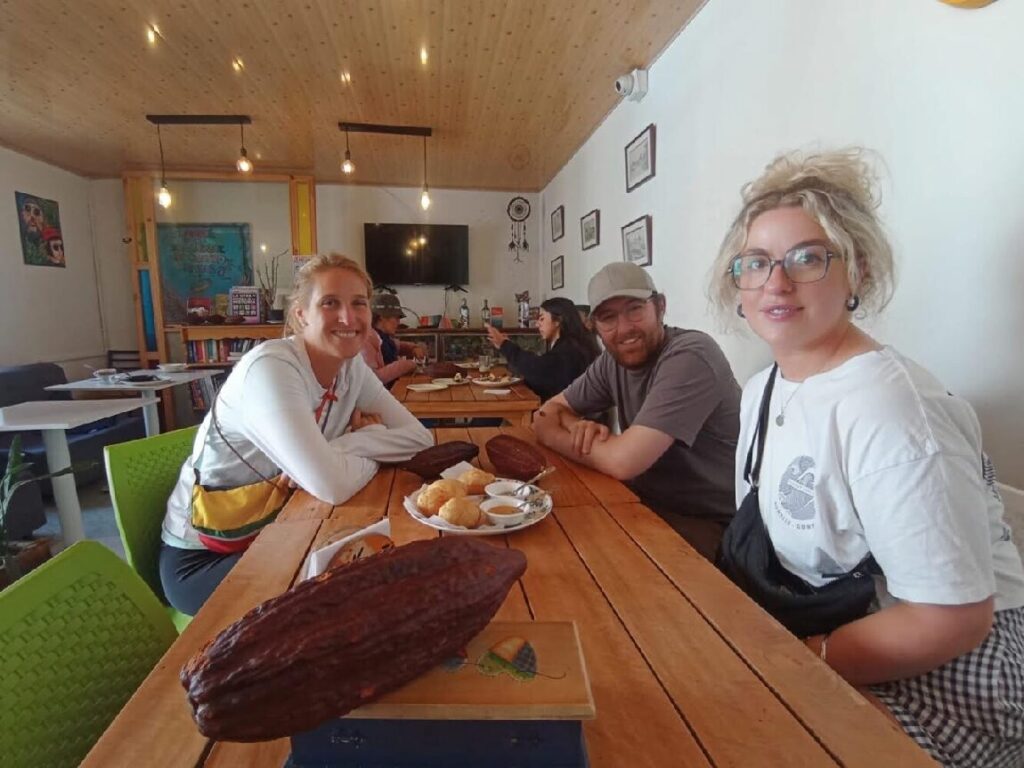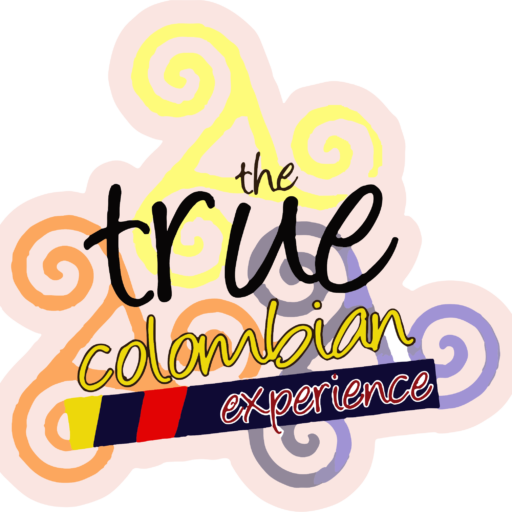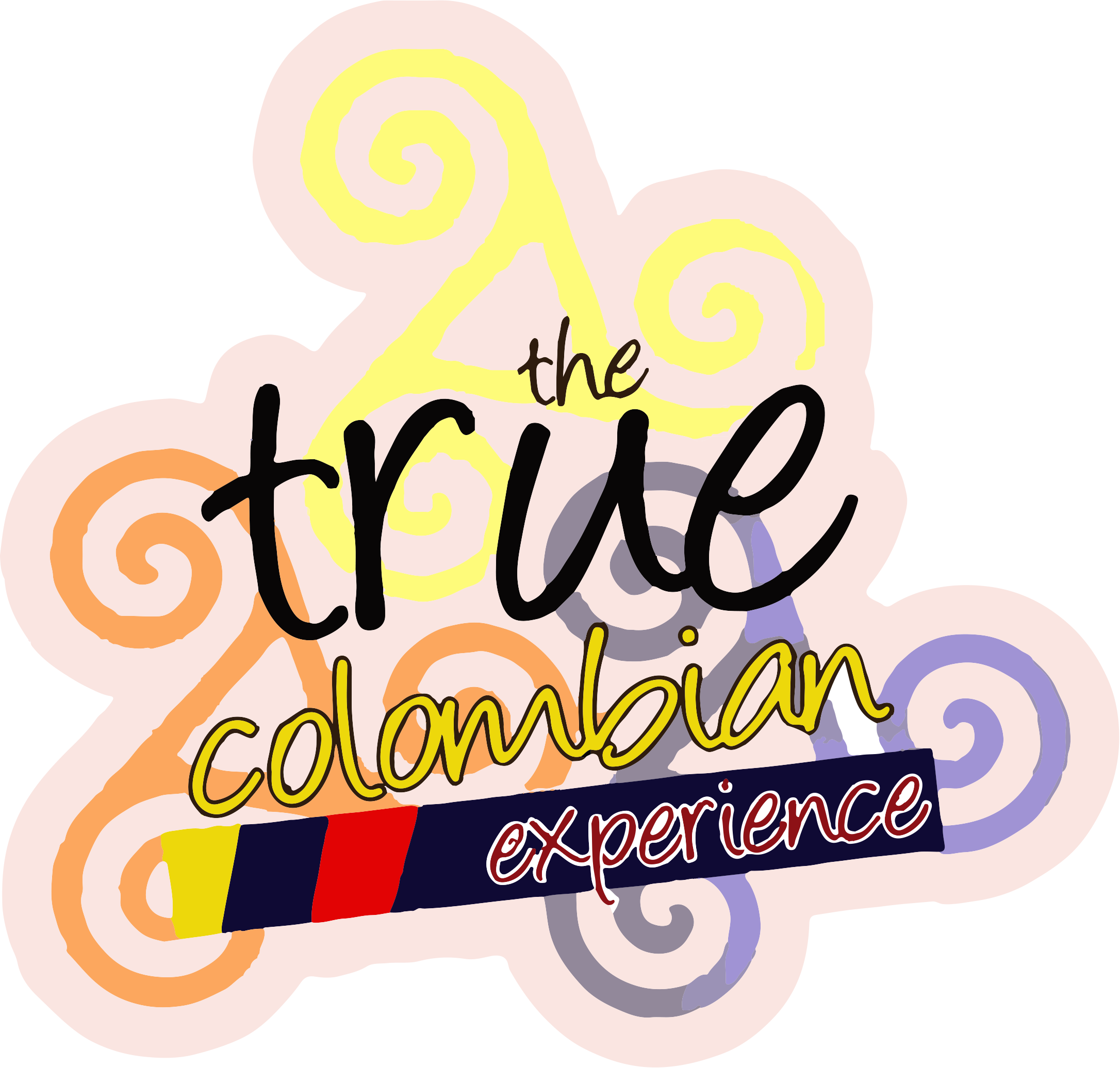I remember that day well; that small, picturesque house with an ancient appearance; it was almost like one of those that appeared in the fairy tales of my childhood; I remember being outside, on that steep, cobblestone street; waiting for them to let us in; I remember that our very clever guide, she told us jokingly, that they seemed to be designed for those magical beings of short stature whose name she could not remember; but that it would be a surprise when we entered. This was the second stop on our Bogota Colombia food tour; we were eager to discover the secrets that Mrs. Miriam, the chef and hostess, was going to share with us about Colombian gastronomy. Then the door opened; Milena, the guide, invited us to go in; the surprise was great when we entered, the house had two floors and although everything was very old, it turned out to be cozy. Milena told us that colonial houses in La Candelaria used to be like that; always something unexpected, because originally they were giants and in modern times the owners divided them to get better use, although on the outside by law they had to be kept the same; inside they always had thousands of things to discover.
—this particular house had been divided into three houses and we were in one of them. —said the guide—
They invited us to sit at the table, I can’t stop thinking about all the photos of Jesus, the Virgin Mary and all the saints that could be seen decorating the wall before reaching the kitchen; “Colombians must be very religious”; I thought. Mirian was a very quiet but smiling person.
—Mirian is from Cartagena Colombia, but she has lived in Bogotá for about 10 years now. —said Milena—
—Today she has given us the privilege of being able to come to her house and she is going to teach us how to make a traditional dish from the Colombian Caribbean coast! —the carimañola—
The carimañola explained Milena; It was a yuca dough that was fried and stuffed with ground beef or cheese. They brought us to the kitchen; Mrs. Miriam gave us gloves and we got to work, cooking, while some brought the freshly cooked yuca and put it into the grinding machine according to the host’s instructions, translated by the guide; others, like me, ground and passed the ready dough to Mrs. Miriam and the rest of the tourists who were part of this gastronomic tour through Bogotá, so that they could give it a circular shape in which the chef’s two sons would put a spoonful of ground beef previously cooked by them (this was a family business, with which they supplied many of the fried food places in the area) in the middle of the dough and for vegetarians with cheese.
—and if you’re vegan, with onion, have a good Hogao. —Milena told us—
The guide and the hostess showed us how they were joined together to enclose the filling and form a kind of empanada, only more circular and made of yuca. One by one, we all had the opportunity to make our own, so the last step was the most surprising; Mrs. Mirian told us that they had to be fried in a pot with very hot oil and this was what prevented them from becoming just fat; she also gave us the last secret, which I would never have thought of on my own, even though I am a cook in my country; make some small holes with a fork so that the dough would not explode when you put it in the boiling oil; in less than two minutes it was ready and crispy to eat. We all did our thing until we finished; then we returned to the table where the plates, along with some cups of good Colombian hogao were waiting for us for that traditional feast that we were going to eat. After eating, we all thanked the lady and her family for the great experience, for allowing us to enter their magical house; for helping us to really know what Colombia tastes like; some of us hugged her, others gave her a tip and continued on our way with the guide on this trip through the country without having to leave Bogotá. This was the second stop on our wonderful Bogotá day trips.
I remember that day well; in which I learned what people eat in Colombia and with this I had the opportunity to enter the heart of that wonderful country.
By Fredy Calderon






